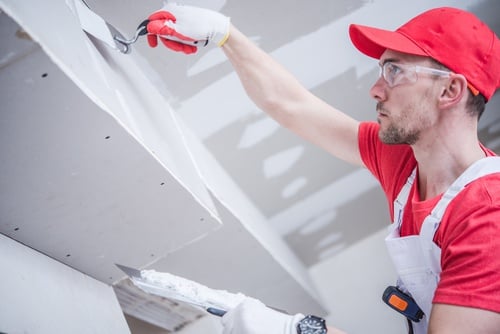In modern construction, drywall is as vital a component as wood and cement. Every wall in effectively every home in America is made of drywall; it provides a smooth, insulative surface on which homeowners can apply texture, paint, hang pictures and more. Drywall is a major upgrade from previous wall construction methods, such as hand-applied wall plaster, but there is something that threatens its ubiquity: China.

A significant portion of drywall used in America is manufactured in China, where manufacturing costs are low and raw materials are plentiful. However, for nearly a full decade, drywall manufacturers in China were lax in regulations, and the drywall installed in homes during that period pose a significant risk to homeowners, contractors and anyone else in their vicinity. As a result, Chinese drywall has had a significant impact on the real estate industry, especially in some areas of the country, since the discovery of its manufacturing defects and health effects.
Homes built or modified between 2001 and 2009 might contain Chinese drywall. Here’s what that means.
Drywall is typically a gypsum-based plaster that is kiln-dried between two thick sheets of paper, allowing it to form flat and smooth. Gypsum is safe and easy to work with, making it an ideal construction material. Typically, American manufacturers produce enough drywall to sate the country’s demand. Unfortunately, during the construction boom of the early and mid-aughts — as well as the increased demand for drywall after Hurricane Katrina — and Chinese drywall was imported to more than 20 states and built into more than 100,000 homes.
Soon after construction, homeowners in residences where Chinese drywall was installed began complaining of odd smells as well as corroded metal. Often, homes with Chinese drywall suffer from plumbing, electrical and HVAC issues, and homeowners might notice silver and copper jewelry tarnishing quickly. Additionally, many residents of households with Chinese drywall suffer from respiratory illnesses, like asthma and chronic coughing as well as chronic headaches and sinus issues.
Soon enough, investigations revealed that the drywall off-gases several volatile chemicals, including carbon disulfide, carbonyl sulfide and hydrogen sulfide. Laboratory tests determined that the foreign drywall contains a number of additional strange components, including a higher level of pyrite, fly ash and a bacteria known as Acidithiobacillus ferroxidans. Each of these components can release excess sulfur, causing the above-listed problems.
Realtors can hardly venture into Chinese drywall–affected homes and replace the offending components themselves, but there are steps realtors and agents can take to ensure their clients remain safe from this threat. For instance, a group of realtors in Southwest Florida — a region hard-hit by Katrina and thus suffering greatly from Chinese drywall — are campaigning to add drywall manufactured in China to the disclosure list, alongside radon gas and mold. Because inspectors cannot discern Chinese drywall from American-made drywall with a visual inspection, the mandated disclosure would ensure that buyers have all pertinent information about issues in their potential home. It might be wise for all realtors to work for this disclosure for the safety of their clients and the security of properties everywhere.
Realtors should also be able to help homeowners identify Chinese drywall in their homes and offer suggestions for remedying the situation. First, realtors should be able to tell homebuyers if construction occurred on the property between 2001 and 2009. Then, with the help of a qualified inspector, realtors should look for blackened copper wiring, AC coils or plumbing. Then, samples of the corroded copper as well as the offending drywall should be sent for laboratory testing.
If a home is found to have the dangerous drywall, it might not be an immediate deal-breaker. Realtors should provide the contact information of Phoenix drywall repair providers — or anyone in the region with experience repairing the damage of Chinese drywall. Plus, realtors should be able to negotiate a much lower purchase price given the presence of such a potentially hazardous construction material.
Chinese drywall is a construction issue of equal importance as asbestos or lead, but few homebuyers are aware of the hazards. A good real estate agent should be able to explain and address any concerns calmly and competently, so homebuyers and sellers feel safer and more certain of their decisions.